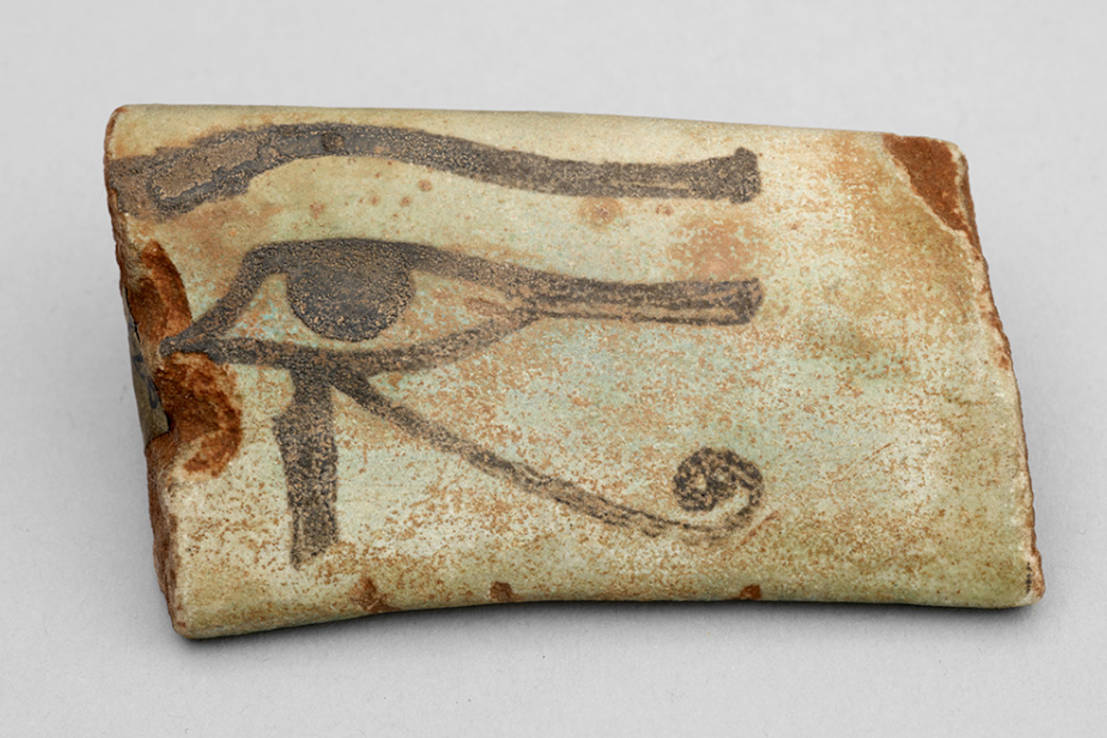
in Português europeu / European Portuguese translated by Jaime
This object has been translated into 12 different languages by 15 different users
Este é o Olho de Horus, por vezes conhecido como o olho wedjat, usado como um símbolo de proteção popular durante o Antigo Egipto. O deus Horus é representado como um falcão. Na mitologia do Antigo Egipto, Horus teve o seu olho retirado numa luta com o seu rival Seth, que havia matado o pai de Horus, Osiris. O olho foi mais tarde restaurado pelo deus Thoth, tornando-se wedjat, significando “inteiro” ou “saudável”.
Tornando-se um símbolo popular de proteção, particularmente para os mortos, e teve um uso popular por volta de 3000 anos, desde o Reino Velho até á era Romana. Era também usado em culturas vizinhas , como as culturas Cananéia, Síria e Núbia.
Existe algo que guardes como amuleto de boa sorte ou proteção?
Do you have something you’d like to say, in your own language or English, about the object or translation? We’d like to hear what you think.
Translations are community-sourced and for anyone to participate in, however you use your language. For more information, see Community Guidelines.
19 Dec, 2025
Do you have a spam issue on this blog; I also am a blogger, and I was curious about your situation; we have developed some nice methods and we are looking to exchange solutions with others, please shoot me an email if interested.
http://www.vorbelutrioperbir.com
23 Sep, 2023
Italians, especially in southern Italy, are well known for their attachment to superstition. Therefore, it is not surprising that good-luck charms are particularly popular. Arguably, the most popular amulet is the “cornicello” or “cornetto” (meaning “little horn”). The amulet is believed to protect against “malocchio” (“evil eye”), and it is commonly found in the Italian regions of Campania, Lazio, Puglia, and Basilicata.
The cornetto is in the shape of a horn, and it can be made from metal, but it is most commonly red in colour. This makes them look very similar to chilli pepper, but it is meant to represent an eland horn. The cornetto finds its origin in Greek and Roman mythology as it is linked to another common symbol: the cornucopia. The cornucopia, also known as the “horn of plenty” is a symbol of abundance and it is commonly illustrated as a large horn-shaped container overflowing with fruits and flowers. Similarly, the cornetto is also associated with abundance and fertility and remains one of the most common Italian symbols of protection. If you ever go to Naples, you can be certain to see at least one cornetto be worn as jewellery, hung from the rearview mirrors of a car, or kept in a house for decor and good luck.